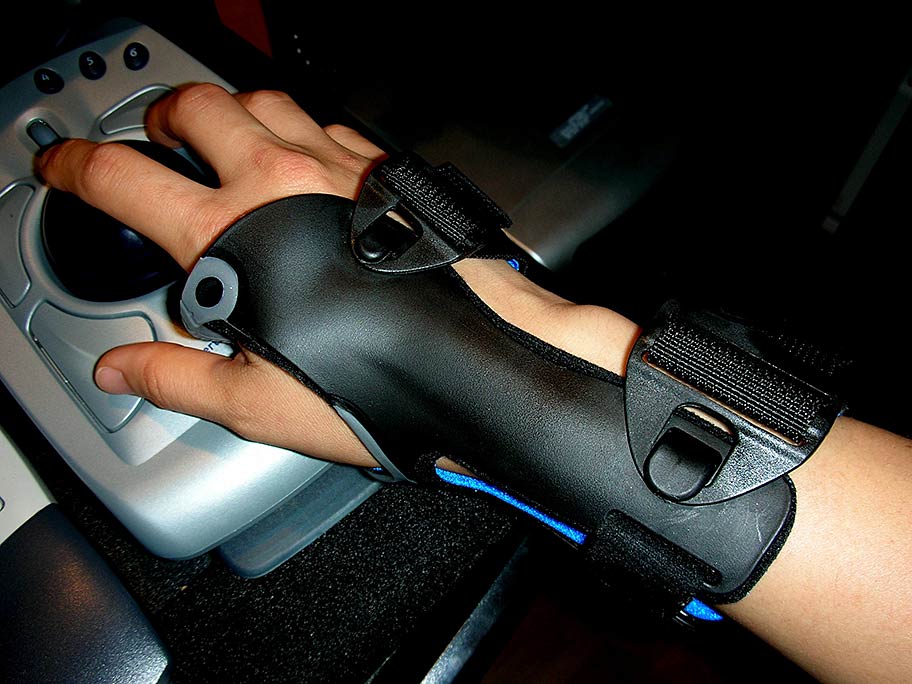
Photograph: Chika Watanabe | Flickr | https://creativecommons.org/licenses/by/2.0/
Ergonomics: What I’ve learned while battling a repetitive motion injury
Part 2 in a series
Struggling with a repetitive motion injury and a slow recovery can be scary, confusing and depressing. I know because I’ve been battling tendonitis for several months.
There can be several unknowns. Will I ever feel better? Will I have to give up doing what I love? Is there an underlying health issue that is making this condition worse or causing it? My mother developed carpal tunnel syndrome, and she assumed it was a result of spending too much time on a keyboard. It turns out that a life-threatening bone marrow disease was to blame.
You want to pull your weight at work, but you fear you’re not doing enough to protect yourself from further injury.
In my journey, I’ve learned a lot about ergonomics, wrist and arm anatomy, repetitive motion injuries and how to take better care of myself.
I hope that by sharing some of what I’m learning, I can help and encourage others. I’m thankful I have a platform like the Reynolds Journalism Institute where I can do that.
1. Know that you’re not alone.
You can feel alone when you’re the only one in the office suffering from an RMI. You wish your co-workers could “be in my shoes” for one day just to feel that pain you’re dealing with, both physically and emotionally.
I’ve found that it helps to educate people. Be honest and transparent with them about how you’re feeling. Not all injuries or recovery times are the same. If you’re not bleeding or limping around on crutches, your pain may not be top of mind to them as it is to you.
Seek out others who have gone through similar injuries or those who deal with pain on a daily basis. My occupational therapist helped me with more than just my physical recovery. He became someone I could talk to and commiserate with. The web was also helpful for finding others with similar injuries.
2. Take care of yourself.
I’m guilty of gluing myself to my chair and spending hours cranking away at a project. It’s easy to make excuses for staying put because you have deadlines. But as I’ve learned, this isn’t healthy.
Find other activities that don’t involve a keyboard. Don’t eat lunch and work on your computer at the same time. Pick up magazines or newspapers and get story ideas there. Watch that archived webinar about how to improve your writing skills.
Take breaks. Take time off from work if you need to. If a physical therapist gives you stretches to do, make sure you do them.
3. Don’t be afraid to experiment with equipment. Consider assistive technology.
Find out if your company or ergonomics department has equipment that you can demo. If you don’t know if your company has an ergonomics department, ask your human resources department.
I’ve used a Microsoft Sculpt keyboard and mouse for several months. After I quit demoing it, I quickly realized how much it helped. I still struggle with plenty of pain, so I’ve decided to demo another keyboard. I’m trying the Kinesis Freestyle 2, which is a split keyboard.
My therapist’s No. 1 recommendation has been to find a way to rest my wrist. So, I’ve begun experimenting with Dragon Dictation. I’ve read that dictating words is faster than typing. I’ll get back to you on that. I’m still testing.
4. Be patient with yourself and your assistive technology.
As I’ve learned firsthand, recovery doesn’t usually happen overnight. I’ve also found that learning how to use Dragon or dictate stories doesn’t happen overnight either.
Dictation and transcription programs have their limitations. Many of them are computer programs. Be patient. Dragon is becoming more accurate as it adapts to my voice, but it’s stumbled a fair amount over words and phrases. Enunciating helps.
I’m still experimenting with Dragon, and I hope to write more later about my experience dictating stories.
5. Don’t ignore ergonomics.
For those of you reading this article who aren’t dealing with an RMI, don’t ignore ergonomics or taking care of your body. Ergonomic practices can help prevent these injuries. Thankfully, I have an office at RJI where I can close the door, so I’m not bothering those in the offices around me when I’m dictating. I realize that might be a harder challenge in an open newsroom setting.
In case you missed it, check out part one of this series to learn more about what puts you at higher risk for an injury and what you can do to protect yourself.

Comments